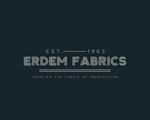When selecting upholstery fabrics for commercial purposes, the choice between man-made and natural fibers is a critical decision. Each type offers unique advantages and challenges, influencing aesthetics, durability, cost, and sustainability. Here's a closer look at how these two categories differ when applied in commercial settings.
Natural Fiber Upholstery Fabrics
Natural fibers are derived from plants or animals, with common options including cotton, linen, wool, and silk.
Advantages:
- Aesthetic Appeal: Natural fibers are often preferred for their organic texture and luxurious appearance. Linen and wool, for instance, lend a sophisticated, timeless charm to commercial spaces.
- Comfort: These fabrics are breathable and soft, making them ideal for settings prioritising comfort, such as lounges or boutique hotels.
- Sustainability: Natural fibers like organic cotton and hemp are biodegradable and eco-friendly, aligning with green initiatives.
Disadvantages:
- Durability: Natural fibers are generally less resistant to wear and stains compared to man-made fabrics, requiring more maintenance in high-traffic areas.
- Cost: They are often more expensive, both in initial purchase and upkeep, due to their premium quality and care requirements.
- Vulnerability to Environmental Factors: Natural fibers can fade under direct sunlight and may be susceptible to mildew in humid conditions.
Ideal Uses:
Natural fibers are best suited for commercial spaces emphasizing luxury and aesthetics over heavy usage, such as boutique offices, high-end restaurants, or exclusive lounges.
Man-Made Fiber Upholstery Fabrics
Man-made fibers, such as polyester, nylon, acrylic, and vinyl, are synthetically produced to enhance durability and versatility.
Advantages:
- Durability: Engineered for toughness, these fabrics resist stains, abrasions, and fading, making them ideal for high-traffic areas like lobbies and conference rooms.
- Cost-Effectiveness: Man-made fibers are generally more affordable than their natural counterparts, offering a budget-friendly solution for large-scale commercial projects.
- Performance Features: Many synthetic fabrics come with performance enhancements, such as water resistance, antimicrobial coatings, and fire retardancy.
- Low Maintenance: These fabrics are easier to clean and maintain, reducing long-term care costs in busy environments.
Disadvantages:
- Aesthetic Limitations: While advances in technology have improved the appearance of synthetics, they may lack the natural feel and warmth of organic fibers.
- Environmental Concerns: Many man-made fabrics are non-biodegradable and involve energy-intensive manufacturing processes. However, recycled synthetics are gaining popularity as eco-friendlier alternatives.
- Comfort: Some synthetics, such as vinyl, may feel less breathable and comfortable compared to natural fabrics.
Ideal Uses:
Man-made fabrics are the go-to choice for heavy-use environments like healthcare facilities, airports, and educational institutions, where durability and functionality are paramount.
Key Considerations for Commercial Buyers
When choosing upholstery fabrics for commercial spaces, consider these factors:
- Traffic and Usage: For high-traffic areas, opt for man-made fabrics with performance features. For less-used, high-end spaces, natural fibers may be worth the investment.
- Budget: Synthetic options provide cost efficiency for large projects, while natural fibers may suit smaller, upscale projects.
- Sustainability Goals: If eco-friendliness is a priority, look for certified natural fabrics or recycled synthetics.
- Brand Image: The choice of fabric can influence the perception of your space. Natural fibers exude luxury, while man-made materials showcase practicality and modernity.
Choosing between man-made and natural fiber upholstery fabrics ultimately depends on the specific needs of your commercial space. Whether prioritising durability, aesthetic appeal, or sustainability, understanding the strengths and limitations of each option ensures your investment meets both functional and stylistic goals.
By carefully assessing your priorities, you can select a fabric that aligns with your commercial vision while providing lasting value.









Comments (0)